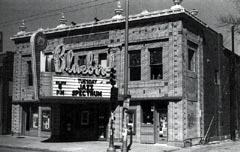City Park South: Detroit to Harrison, Colfax to 17th Avenue
City Park West or Uptown: Logan to York, Colfax to 23rd Avenue
| The oldest structures in Uptown represent Denver’s boom period of 1880 to 1893. Architect Frank E Edbrooke moved from Chicago to design the Tabor Grande Opera House for silver baron Horace Tabor, and remained to design what were to become landmarks: the Brown Palace Hotel, Oxford Hotel, and others. Edbrooke also designed his own home at 925, the Cranmer House at 931 and the Merrit House at 941 East Seventeenth Avenue.
William Lang, known as Denver’s most eclectic architect, and his partner Marshall Pugh designed many homes in the neighborhood, among them the elegant Bailey Mansion at 1600 Ogden Street. They also designed the Raymond House, recently renovated as the Castle Marne bed-and-breakfast inn. Many of the finest remaining examples of structures by other famous architects: Roeschlaub, Kidder, Huddart, the Baerrensen brothers, Murdock and Stuckart, Varian and Sterner, Balcom and Rice, are located in Uptown. Architectural styles include Queen Anne, Italian Renaissance, Richardsonian, “Denver Eclectic,” and others. After the disastrous silver crash, the lavish and ornate architecture gave way to more restrained, conservative construction and the “boxier,” neoclassical style became popular. The most common example of this is the “Denver Square.” Uptown offers many examples from this period as well.
|
| Landmarks | |
 |
BLUEBIRD THEATER 3315-17 E. Colfax Ave.Originally built as the Thompson Theater, the blond-brick, Beaux-Arts Mediterranean Revival was designed by Harry W. J. Edbrooke. Renamed the Bluebird Theater in 1922 and promoted Depression-era patronage with “Bank Night” giveaways of cash and commodities. Became skinflick theater in 1974; restored as trendy cabaret in 1987. |
